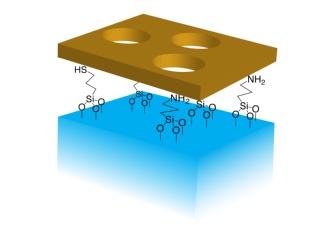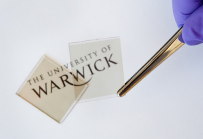Helena Stec
I completed my Masters degrees in Material Engineering and Chemistry in 2008 and 2009 respectively at Adam Mickiewicz University in Poznan, Poland.
During my Masters degree I developed an interest in renewable energy technologies and in 2009 was given the opportunity to do PhD with Dr. Ross Hatton at the University of Warwick in the area of organic photovoltaics. I completed my PhD in 2013; my project focused on developing ultra-thin metal electrodes for organic photovoltaic devices. Currently indium tin oxide (ITO) coated glass is invariably employed as the transparent electrode in solar cells, primarily due to the absence of viable alternative. ITO has many drawbacks, including high cost and unsuitable morphological properties and so an alternative is urgently needed. I have developed a method of obtaining ultra-thin, smooth, transparent and highly conductive gold films, which have been successfully incorporated into both molecular and polymer photovoltaic devices. This method has also been translated to flexible, plastic substrates.
Publications
1. Ultra-thin Transparent Au Electrodes for Organic Photovoltaics fabricated using a Mixed Mono-Molecular Nucleation Layer, H. M. Stec, R. J. Williams, T. S. Jones, R. A. Hatton, Advanced Functional Materials 2011, 21, 1709-1716.
2. Widely applicable coinage metal window electrodes on flexible polyester substrates applied to organic photovoltaics, H.M. Stec, R. A. Hatton, ACS Applied Materials and Interfaces 2012, 4, 6013-6020.
3. An indium-free low work function window electrode for organic photovoltaics which improves with insitu oxidation, O. S. Hutter, H. M. Stec, R. A. Hatton, Advanced Materials 2013, 25, 284-288.
4. Plasmon-active nano-aperture window electrodes for organic photovoltaics, H. M. Stec, R. A. Hatton, Advanced Energy Materials 2013, 3, 193-199. Front cover article.


